
Classics school trips to Rome & Sorrento
Where else can Roman life be bought to life so vividly and effortlessly than on a classics school trip to Rome and Sorrento? Pupils taking this two-centre package gain a valuable insight into life in both Rome and the outlying regions that supplied the city. By exploring the wonderfully rich layers of Roman life preserved in Rome, Sorrento and the surrounding area, your group will have plenty of source material to compare the different lives of the Roman Empire – from emperors through to farmers and slaves.





















SUGGESTED ITINERARIES
- Depart the UK and travel to Rome
- Spanish Steps
- Trevi Fountain
- Evening meal at local restaurant
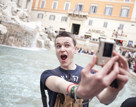
- Colosseum visit
- Sistine Chapel & Vatican Museum
- St Peters Basilica
- Evening meal at local restaurant
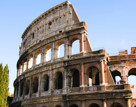
- Depart Rome
- Arrive in Sorrento
- Herculaneum
- Evening meal at accommodation
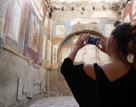
- Guided tour of Pompeii
- Mount Vesuvius
- Pizza making
- Tarantella show & dinner
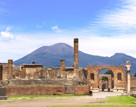
- Archaelogical Museum of Naples
- Depart Sorrento
- Arrive in the UK
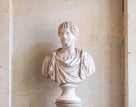
Features
ACCOMMODATION
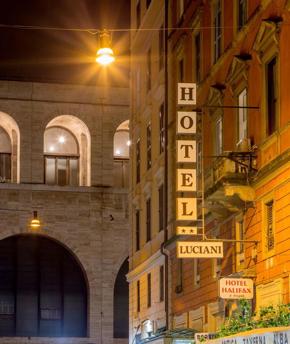
Just down the road from Rome’s Termini train station, family-run Hotel Luciani is perfectly positioned for public transport links and a comfortable walk from the main sights of the city, including the Trevi Fountain and Colosseum.
- Free Wi-Fi
- Air conditioning
- Breakfast room
- TV and lounge area


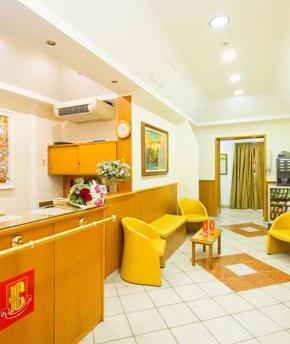
Located in the centre of Rome, Hotel Concorde is just around the corner from Termini train station, where you can easily travel around the city thanks to its metro and bus links.
- Free Wi-Fi
- Terrace
- Luggage storage
- Daily continental breakfast


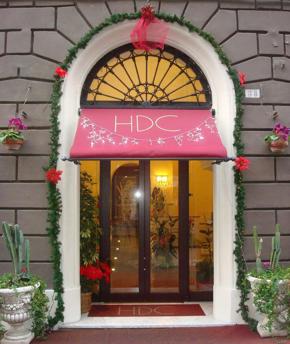
Hotel Dina is a family-run hotel set within the heart of Rome, just 100 metres away from the Basilica Papale di Santa Maria Maggiore and within walking distance to Termini train station.
- Free Wi-Fi
- 24-hour reception
- Luggage storage
- Daily italian buffet breakfast


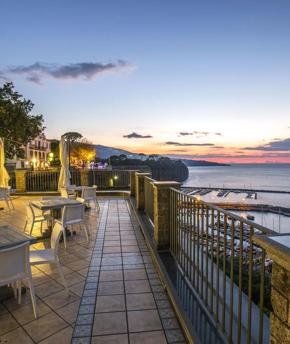
Just a stone’s throw away from the sandy Meta Lido Beach and a great central base for visiting local tourist sights, Hotel La Ripetta is an excellent choice for your group. From here, exploring the Amalfi Coast and Roman Archeological Museum couldn't be simpler.
- Rooftop terrace
- Restaurant
- Sauna
- Modern spa



Set in the heart of Sorrento, just a 15-minute walk from the nearest beach and down the road from Sorrento Circumvesuviana Train Station, Hotel Tourist is a great base for your group to explore the local area.
- Restaurant
- Outdoor swimming pool
- Sun terrace
- Garden



Just down the road from Rome’s Termini train station, family-run Hotel Luciani is perfectly positioned for public transport links and a comfortable walk from the main sights of the city, including the Trevi Fountain and Colosseum.
- Free Wi-Fi
- Air conditioning
- Breakfast room
- TV and lounge area



Located in the centre of Rome, Hotel Concorde is just around the corner from Termini train station, where you can easily travel around the city thanks to its metro and bus links.
- Free Wi-Fi
- Terrace
- Luggage storage
- Daily continental breakfast



Hotel Dina is a family-run hotel set within the heart of Rome, just 100 metres away from the Basilica Papale di Santa Maria Maggiore and within walking distance to Termini train station.
- Free Wi-Fi
- 24-hour reception
- Luggage storage
- Daily italian buffet breakfast



Just a stone’s throw away from the sandy Meta Lido Beach and a great central base for visiting local tourist sights, Hotel La Ripetta is an excellent choice for your group. From here, exploring the Amalfi Coast and Roman Archeological Museum couldn't be simpler.
- Rooftop terrace
- Restaurant
- Sauna
- Modern spa



Set in the heart of Sorrento, just a 15-minute walk from the nearest beach and down the road from Sorrento Circumvesuviana Train Station, Hotel Tourist is a great base for your group to explore the local area.
- Restaurant
- Outdoor swimming pool
- Sun terrace
- Garden


Excursions
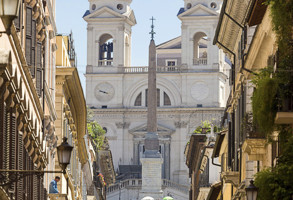
Spanish Steps
The widest stairway in Europe, Rome’s Spanish Steps are famous worldwide for their unique design, having been immortalised in several films and television shows. The steps were built in the 17th century to link the Spanish square with the Trinità dei Monti church, and today make up one of Rome’s most-visited attractions. Located at the foot of the steps, the 17th-century Baroque Barcaccia Fountain adds to the site’s grandeur.
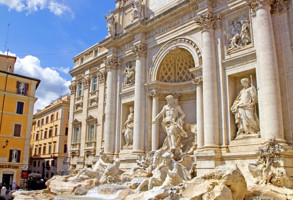
Trevi Fountain
No trip to Rome is complete without a visit to the Trevi Fountain – a firm favourite among Equity staff. One of the most famous and photographed fountains in the world, the fountain dates back to the 17th century and features incredible Baroque details which will amaze your students. We recommend visiting in the evening to enjoy the view of the fountain lit up. Don’t forget to throw a penny in! Who knows, you may return to Rome…
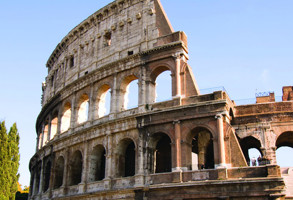
Colosseum Visit
Explore the role and importance of religion in the 2,000-year-old Colosseum, where gladiators and beasts once battled. A legendary site immortalised in film, the Colosseum is always popular among our student groups. Nearby, you can also tour the adjacent Forum and see the ruins of ancient Rome’s most exclusive neighbourhood, where emperors lived in luxury.
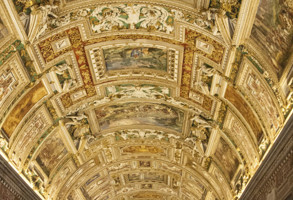
Sistine Chapel & Vatican Museum
Commissioned in 1480, the Sistine Chapel is the site of the papal conclave and is home to Michelangelo’s elaborate ceiling and Last Judgment fresco. This powerful building offers an excellent location to discuss the role and selection of the Pope with your students, as they absorb the building’s significance in Rome and explore its wide selection of religious art.
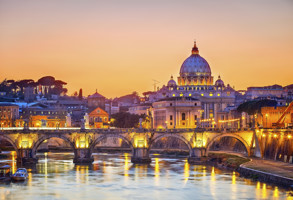
St Peter's Basilica
One of the world’s holiest Catholic sites and largest churches, this cavernous building features a breathtaking dome with masterpieces by Michelangelo and Bernini. It won’t take much encouragement for your students to study the power of Catholicism and the importance of pilgrimage as they experience this Vatican City highlight – one of our favourite excursions in Rome.
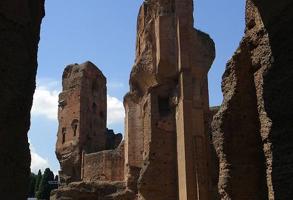
Baths of Caracalla
Wander around the fascinating ancient ruins of these luxurious public baths, which date back to 206 AD. Designed to accommodate around 1,600 bathers, the baths were used for 300-400 years before bathing fell out of fashion in Europe. Today, the archaeological site is used for open-air performances of ballet and opera, and remains one of the best preserved Roman baths in the world.
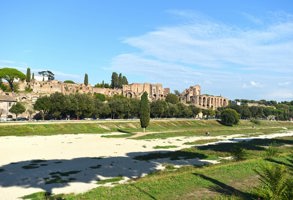
Circus Maximus
Once the largest stadium in ancient Rome, Circus Maximus is now a public park where students can uncover the site’s vast history over a relaxing afternoon. At one point the Circus could seat 250,000 people – a quarter of Rome’s population – who gathered for almost a millennium to see the chariot races that were held here.
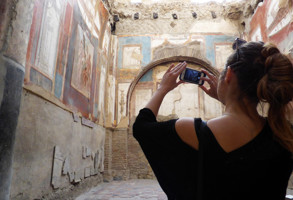
Herculaneum
Buried during the same series of volcanic eruptions that destroyed Pompeii in 79 AD, this ancient municipality was buried deeper than its neighbouring towns, leaving behind some of the best-preserved ruins in the Bay of Naples. Highlights of the archaeological site include Terme Maschili, the Central Baths, and the Fornici – a series of port warehouses which hold the skeletal remains of workers and soldiers – all exhibits we’ve seen captivate student groups.
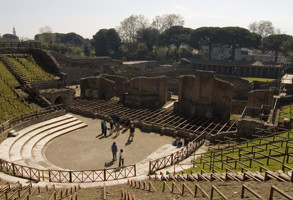
Pompeii
Contemplate the disastrous impact of the 79 AD eruption of Mount Vesuvius with a guided tour of Pompeii – a major city that was buried by volcanic ash and pumice. Following centuries of incredible excavations, Pompeii was found beneath the ash, and makes up some of the best-preserved ruins of the Bay of Naples.
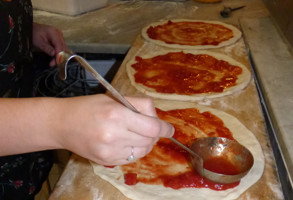
Pizza Making with Tarantella Show & Dinner
During your stay in the Bay of Naples, why not head to a local pizzeria for a class on how to make authentic Neapolitan pizza? Students will learn how to make the perfect pizza base before topping it with their own favourite ingredients, then tasting the final product as they experience the classical Italian folk dance, Tarantella. An evening of cultural immersion we know school groups will love getting involved in.

Archaeological Museum of Naples
One of the most important archaeological museums in Italy, owing to its incredible collection of artefacts from the Herculaneum and Pompeii, it brings the dusty ruins to life. The Archaeological Museum of Naples (often abbreviated to MANN) is an excursion not to be missed. Here, students can gaze in wonder at works from Greek, Roman and Renaissance times.

Vesuvius
Students can study the history, geography and geology of this magnificent active volcano on a school trip to Vesuvius, one of several volcanoes which form the Campanian volcanic arc. Best known for its volcanic eruption in 79 AD that left devastating effects on the cities of Pompeii and Herculaneum, we know students will love getting up close with the volcano.
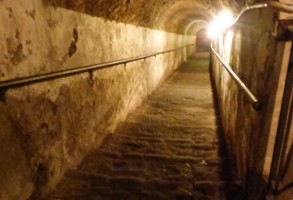
Naples Underground
Above ground, Naples is a vibrant and charismatic city, but little is known about what goes on underneath the city. On this excursion, students will descend into the atmospheric underground tunnels of Naples and discover a treasure trove of secrets – from the Greek-Roman aqueduct, to the ancient remains of a Roman theatre and WWII air-raid shelters. An experience so jam packed, we know they’ll love it.

Island of Capri
Located off the coast of the Bay of Naples, the stunning island of Capri is famed for its crystal clear waters, rugged landscape and world famous Blue Grotto caves. The perfect place for visit for a geography trip, the island offers students a deeper understanding of coastal erosion and geomorphology.
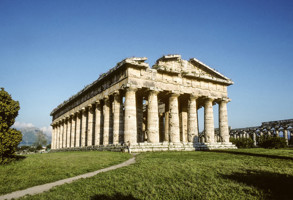
Paestum
Founded in the 6th century BC, Paestum was one of the signature cities of ancient Greece to exist in Italy. Although it was abandoned after a series of raids and malaria epidemics, today the site is famous for its three Greek temples in the Doric order, which are some of the best-preserved in the world.
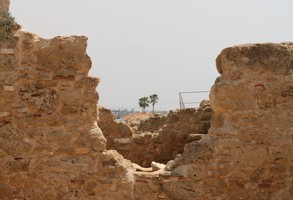
Cuma Archaeological Park
Founded in 750 BC, Cumae is thought to have been the earliest Greek colony on the Italian mainland. The site’s extensive Ancient Greek and Roman ruins tell the story of the settlement’s power and dominance, its incorporation into the Roman Empire and its eventual decline. A must-see for students interested in ancient history and classical studies.

Spanish Steps
The widest stairway in Europe, Rome’s Spanish Steps are famous worldwide for their unique design, having been immortalised in several films and television shows. The steps were built in the 17th century to link the Spanish square with the Trinità dei Monti church, and today make up one of Rome’s most-visited attractions. Located at the foot of the steps, the 17th-century Baroque Barcaccia Fountain adds to the site’s grandeur.

Trevi Fountain
No trip to Rome is complete without a visit to the Trevi Fountain – a firm favourite among Equity staff. One of the most famous and photographed fountains in the world, the fountain dates back to the 17th century and features incredible Baroque details which will amaze your students. We recommend visiting in the evening to enjoy the view of the fountain lit up. Don’t forget to throw a penny in! Who knows, you may return to Rome…

Colosseum Visit
Explore the role and importance of religion in the 2,000-year-old Colosseum, where gladiators and beasts once battled. A legendary site immortalised in film, the Colosseum is always popular among our student groups. Nearby, you can also tour the adjacent Forum and see the ruins of ancient Rome’s most exclusive neighbourhood, where emperors lived in luxury.

Sistine Chapel & Vatican Museum
Commissioned in 1480, the Sistine Chapel is the site of the papal conclave and is home to Michelangelo’s elaborate ceiling and Last Judgment fresco. This powerful building offers an excellent location to discuss the role and selection of the Pope with your students, as they absorb the building’s significance in Rome and explore its wide selection of religious art.

St Peter's Basilica
One of the world’s holiest Catholic sites and largest churches, this cavernous building features a breathtaking dome with masterpieces by Michelangelo and Bernini. It won’t take much encouragement for your students to study the power of Catholicism and the importance of pilgrimage as they experience this Vatican City highlight – one of our favourite excursions in Rome.

Baths of Caracalla
Wander around the fascinating ancient ruins of these luxurious public baths, which date back to 206 AD. Designed to accommodate around 1,600 bathers, the baths were used for 300-400 years before bathing fell out of fashion in Europe. Today, the archaeological site is used for open-air performances of ballet and opera, and remains one of the best preserved Roman baths in the world.

Circus Maximus
Once the largest stadium in ancient Rome, Circus Maximus is now a public park where students can uncover the site’s vast history over a relaxing afternoon. At one point the Circus could seat 250,000 people – a quarter of Rome’s population – who gathered for almost a millennium to see the chariot races that were held here.

Herculaneum
Buried during the same series of volcanic eruptions that destroyed Pompeii in 79 AD, this ancient municipality was buried deeper than its neighbouring towns, leaving behind some of the best-preserved ruins in the Bay of Naples. Highlights of the archaeological site include Terme Maschili, the Central Baths, and the Fornici – a series of port warehouses which hold the skeletal remains of workers and soldiers – all exhibits we’ve seen captivate student groups.

Pompeii
Contemplate the disastrous impact of the 79 AD eruption of Mount Vesuvius with a guided tour of Pompeii – a major city that was buried by volcanic ash and pumice. Following centuries of incredible excavations, Pompeii was found beneath the ash, and makes up some of the best-preserved ruins of the Bay of Naples.

Pizza Making with Tarantella Show & Dinner
During your stay in the Bay of Naples, why not head to a local pizzeria for a class on how to make authentic Neapolitan pizza? Students will learn how to make the perfect pizza base before topping it with their own favourite ingredients, then tasting the final product as they experience the classical Italian folk dance, Tarantella. An evening of cultural immersion we know school groups will love getting involved in.

Archaeological Museum of Naples
One of the most important archaeological museums in Italy, owing to its incredible collection of artefacts from the Herculaneum and Pompeii, it brings the dusty ruins to life. The Archaeological Museum of Naples (often abbreviated to MANN) is an excursion not to be missed. Here, students can gaze in wonder at works from Greek, Roman and Renaissance times.

Vesuvius
Students can study the history, geography and geology of this magnificent active volcano on a school trip to Vesuvius, one of several volcanoes which form the Campanian volcanic arc. Best known for its volcanic eruption in 79 AD that left devastating effects on the cities of Pompeii and Herculaneum, we know students will love getting up close with the volcano.

Naples Underground
Above ground, Naples is a vibrant and charismatic city, but little is known about what goes on underneath the city. On this excursion, students will descend into the atmospheric underground tunnels of Naples and discover a treasure trove of secrets – from the Greek-Roman aqueduct, to the ancient remains of a Roman theatre and WWII air-raid shelters. An experience so jam packed, we know they’ll love it.

Island of Capri
Located off the coast of the Bay of Naples, the stunning island of Capri is famed for its crystal clear waters, rugged landscape and world famous Blue Grotto caves. The perfect place for visit for a geography trip, the island offers students a deeper understanding of coastal erosion and geomorphology.

Paestum
Founded in the 6th century BC, Paestum was one of the signature cities of ancient Greece to exist in Italy. Although it was abandoned after a series of raids and malaria epidemics, today the site is famous for its three Greek temples in the Doric order, which are some of the best-preserved in the world.

Cuma Archaeological Park
Founded in 750 BC, Cumae is thought to have been the earliest Greek colony on the Italian mainland. The site’s extensive Ancient Greek and Roman ruins tell the story of the settlement’s power and dominance, its incorporation into the Roman Empire and its eventual decline. A must-see for students interested in ancient history and classical studies.
Trip details
All Equity packages are tailor-made to suit the needs of our groups. Here are our standard package inclusions:
- Return travel by air (air packages include overseas airport transfer. Coach to UK airport from school is available as an optional extra)
- All security charges, airport and local taxes
- 1 free staff place for every 10 full paying passengers by air
- Half-board accommodation
- Excursions
- 24-hour emergency service support
- All travel documentation, luggage labels and resort information
- Meals en-route. While travelling to and from your destination you need to consider meals. These are not included in the package prices.
- Air passenger duty. Any paying passengers over the age of 16 at time of travel will be charged a small tax fee.
Prices are subject to change based on intended dates of travel and final numbers, the Equity team are here to offer you advice and guidance from start to finish, ensuring your school trip runs smoothly and is a great success.
Travel by: Air
Nearest airport: Rome-Fiumicino (Leonardo da Vinci) (FCO) or Ciampino International (G. B. Pastine) (CIA) for Rome; Naples International (NAP) for Sorrento
Transfer time from airport: 30-40mins; 1hr
Best times to travel: April – July, October
Suggested tour length: 5 days, 4 nights





